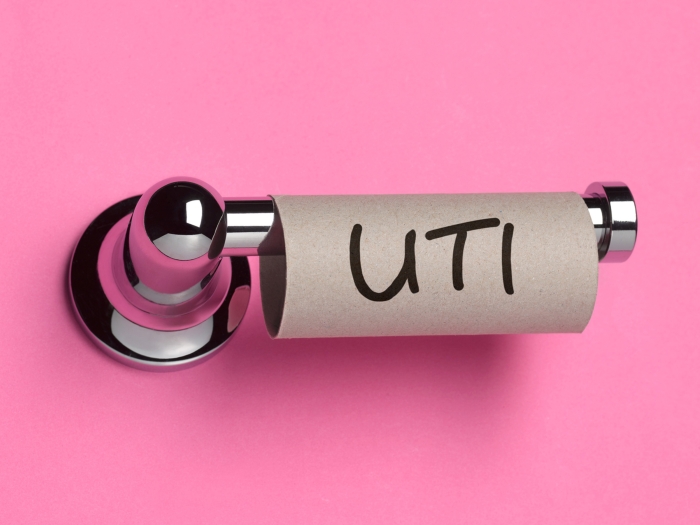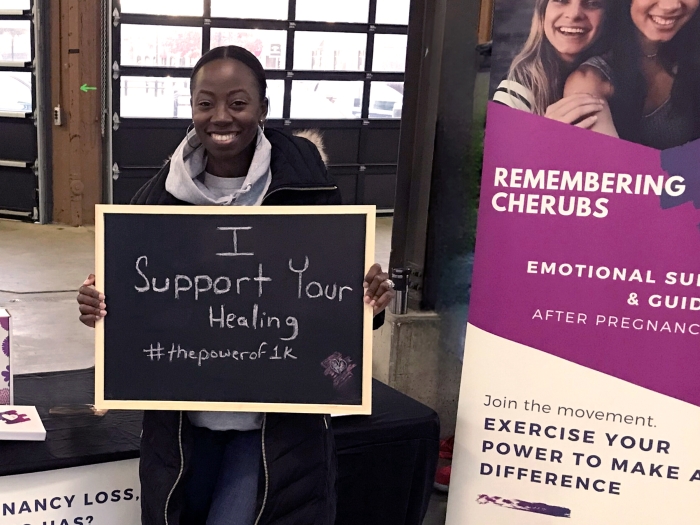Pregnancy can heighten a woman’s risk of a hernia. Here, a Michigan Medicine surgeon helps at-risk women navigate a plan of action.
7:00 AM
Author |

In some individuals, the spot where their umbilical cord detached at birth never fully heals, leaving a tiny hole in the abdominal muscle or tissue behind the navel.
MORE FROM MICHIGAN: Sign up for our weekly newsletter
For women with this condition, physical changes during pregnancy can heighten the likelihood of developing what is known as a postpartum hernia.
"Because you already have a natural weakness there, that expansion in your belly can be the tipping point," says Dana A. Telem, M.D., M.P.H., director of the comprehensive hernia program at Michigan Medicine and an associate professor of surgery.
Hernias of all types occur when an internal part of the body pushes through an opening in muscle or tissue beneath the skin.
A patient might know she has a postpartum hernia, then, with the onset of unfamiliar discomfort. Visual clues such as a protruding belly button also can be a sign.
Just as every childbirth is different, so is the severity of postpartum hernias. The decision to pursue surgical treatment or simply watch the condition and wait can vary, too.
"There are a lot of complex questions involved," Telem says.
Hernia repair basics
Most postpartum hernias are repaired laparoscopically using surgical mesh — material similar in look and texture to a window screen — that provides an added layer of strength atop weak tissue.
Mesh technology has improved dramatically, Telem says. And it boasts a lower rate of hernia recurrence than closing the gap with stitches alone (a 5 to 10 percent likelihood with mesh versus 30 to 40 percent with sutures) for certain hernias.
Some women may prefer one option over the other. And other issues such as whether a patient is obese or taking immunosuppressant medications can shift or delay the course of action.
Which is why the circumstances require a detailed conversation between a woman and her doctor. Here are some of the talking points Telem uses in her own practice:
How serious is your risk? A minor hernia that doesn't inhibit a woman from her normal routine might not warrant immediate surgery. It's important, though, to keep tabs on your body and report any noticeable changes. Also be aware that most hernias won't improve on their own, even if you take it easy.
Are you in pain? Extreme discomfort or the sudden onset of pain are signs that a woman shouldn't wait to take action. Other symptoms may include nausea and vomiting. A noticeable protruding bulge that will not go back in or has associated skin changes needs to be addressed emergently. Says Telem: "If you have a major problem, it will not be a secret. You will know."
SEE ALSO: Pregnancy and Headache: Why It Happens and What to Do
How large is the hernia? The size of the hernia will usually dictate the method of repair. "It can range from a simple cut with a stitch to needing a laparoscopic approach with or without mesh," says Telem. "If it's a very large hernia, we may have to look at abdominal wall reconstruction." Most women, she notes, are treated using the former two options.
Do you want to have more children? Patients who become pregnant again are at a higher risk of recurrence. A significant expansion of one's stomach, after all, is likely to cause the hernia to occur again — or, as Telem notes, "get bigger or worse." A potential mother-to-be who can safely manage her symptoms might consider waiting to seek repair.
Can you manage recovery? It's one thing to have surgery; it's another to do so with the demands of a newborn or other children at home. Typical hernia surgery prohibits patients from lifting anything heavier than 10 pounds for four to six weeks. "It takes about two weeks to feel 80 percent normal," says Telem, noting that most patients feel better in about a month.
For more information or to make an evaluation appointment, contact our team of surgeons who specialize in hernia repair.

Explore a variety of healthcare news & stories by visiting the Health Lab home page for more articles.

Department of Communication at Michigan Medicine
Want top health & research news weekly? Sign up for Health Lab’s newsletters today!





